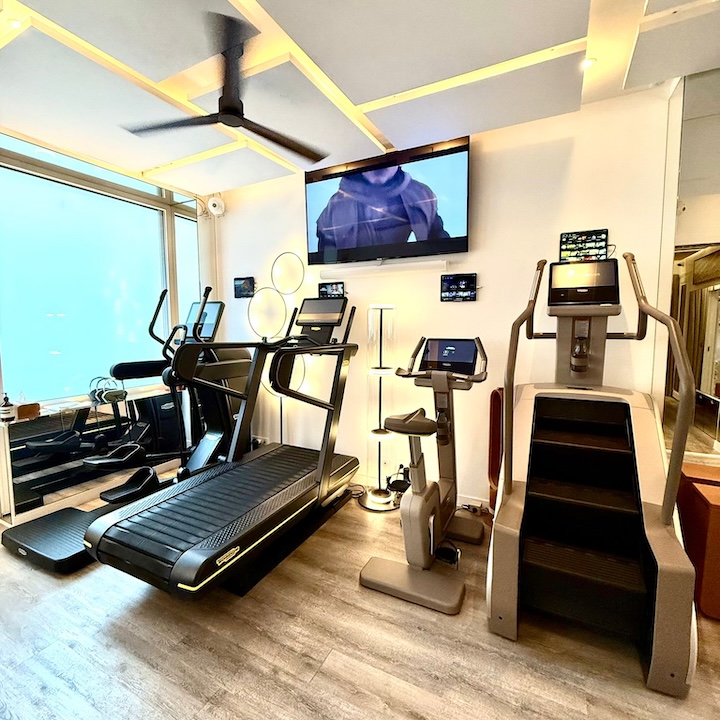Autumn Reset: Restoring Balance Before the Winter Rush
A Season That Slows Us Down - If We Let It
Autumn is a strange moment in the year.
The light changes, the air sharpens, and the body feels it long before the mind l’admet.
Energy shifts. Sleep patterns adjust. Appetite evolves.
It’s not weakness - it’s physiology.

For many people, this transition goes unnoticed, or worse: resisted.
Work accelerates before the end of the year, stress increases, and the colder weather pushes movement to the bottom of the list.
But the body doesn’t speed up in autumn.
It prepares. It reorganises. It protects.
Autumn isn’t the beginning of the slowdown.
It’s the moment where your system asks you to recalibrate - so you can carry the winter without breaking.

Listening to the Seasonal Shift
Your body is constantly reading the environment.
The drop in temperature signals your nervous system to conserve energy.
Shorter daylight reduces cortisol peaks in the morning and increases melatonin production earlier in the evening.
Your joints stiffen faster, your breathing becomes more shallow, and your concentration fluctuates.
Ignoring these signals is possible.
But it comes at a cost: fatigue that lingers, irritability, disrupted recovery, weaker immune responses.

Listening isn’t passivity - it’s strategy.
Adjusting Training Before the Body Forces You To
Autumn training should not look like summer training.
The goal is not to push for intensity; it’s to reinforce structure.
In autumn, training becomes less about chasing performance spikes and more about rebuilding the foundations that often get neglected when the days are long and energy is high. It’s the season where you shift from proving capacity to cultivating durability. Instead of asking your body to go faster or harder, you start asking it to move better, with more control, more precision, and more awareness. This is also the moment to reconnect with the basics: steady breathing, clean movement patterns, stable joints, and a strength that feels rooted rather than rushed. Autumn training is the quiet work that fortifies everything else, the kind that doesn’t always look impressive on the outside but changes the way your body carries you through the months ahead.
What changes in practice?
1. Longer warm-ups
Cold muscles are slower to activate, and the nervous system takes longer to fire.
Five minutes is no longer enough. Ten to fifteen minutes of gradual movement becomes non-negotiable.
2. More mobility, less impact
Joints need lubrication. Tendons need heat.
Autumn rewards fluidity over explosiveness.
3. Strength over speed
The colder months are ideal for rebuilding the foundations: technique, posture, force production, respiratory control.
This is where real progress is made - in the quiet seasons.
4. Respect for recovery
Sleep alters with the change in daylight.
Training must adapt to energy rhythms, not override them.

Autumn is not the time to prove something.
It’s the time to prepare everything.
Feeding the Body That Works Harder in the Cold
The cold subtly increases caloric needs.
Not dramatically, but enough that under-fueling becomes a risk.
Appetite naturally gravitates towards warm, dense foods - a physiological response, not a lack of discipline.
This is the moment to bring back:
- warm breakfasts that stabilise energy,
- root vegetables and slow-release carbohydrates,
- hydration rituals, because colder weather hides dehydration,
- and micronutrients supporting immunity (vitamin D, magnesium, zinc).
Autumn is the season where nourishing matters more than restricting.
Creating Mental Space Before Winter Takes It Away
The end of the year is always noisy - deadlines, obligations, travel, fatigue.
If autumn is not approached intentionally, winter becomes something to endure rather than navigate.
This is the moment to slow the mind:
- fewer transitions in the day,
- shorter but more deliberate breaks,
- deeper breathing,
- less speed, more presence.
Not to be calmer - but to be ready.

A Reset That Sets the Tone for the Whole Winter
When you respect autumn, winter stops being a season of survival.
The body moves better, sleeps deeper, feels more stable.
Training becomes consistent instead of sporadic.
Clarity replaces overwhelm.
Autumn isn’t a pause.
It’s a reset - the quiet architecture of resilience.
Autumn also offers something we tend to overlook: a rare window to rebuild our inner architecture before the intensity of winter compresses our time and attention. It's a season that invites us to clear the noise, reorganise priorities, and put back in place the habits that got scattered during the rush of summer. This is when small rituals regain their power - the morning stretch that reconnects you to your breath, the short walk that resets your focus, the warmer meals that anchor you. These seemingly minor gestures create a stable base layer, the kind that strengthens both the body and the mind without demanding force. In autumn, progress becomes quieter, steadier, and more deliberate, shaped not by acceleration but by alignment. It is a moment to choose depth over pace, intention over momentum, and to build the kind of resilience that doesn't shout but holds.
Conclusion: Prepare, Don’t Push
This season invites you to do something rare:
move with the rhythm of your body, instead of against the rhythm of your life.

Strength built now will carry you through the cold months.
Balance restored now will prevent the fatigue of January.
And attention given now will pay off long after the leaves have fallen.
Autumn is the transition our bodies still remember - we just need to learn to follow it again.









